Smoking a rack of ribs is one of the most delicious ways you can cook this popular cut of meat. From mild to heavy, ribs do well with a wide range of flavors and aromas, which gives you many wood options to choose from. Wondering what’s the best wood for smoking ribs? Here are our favorites for the perfect weekend smoke!
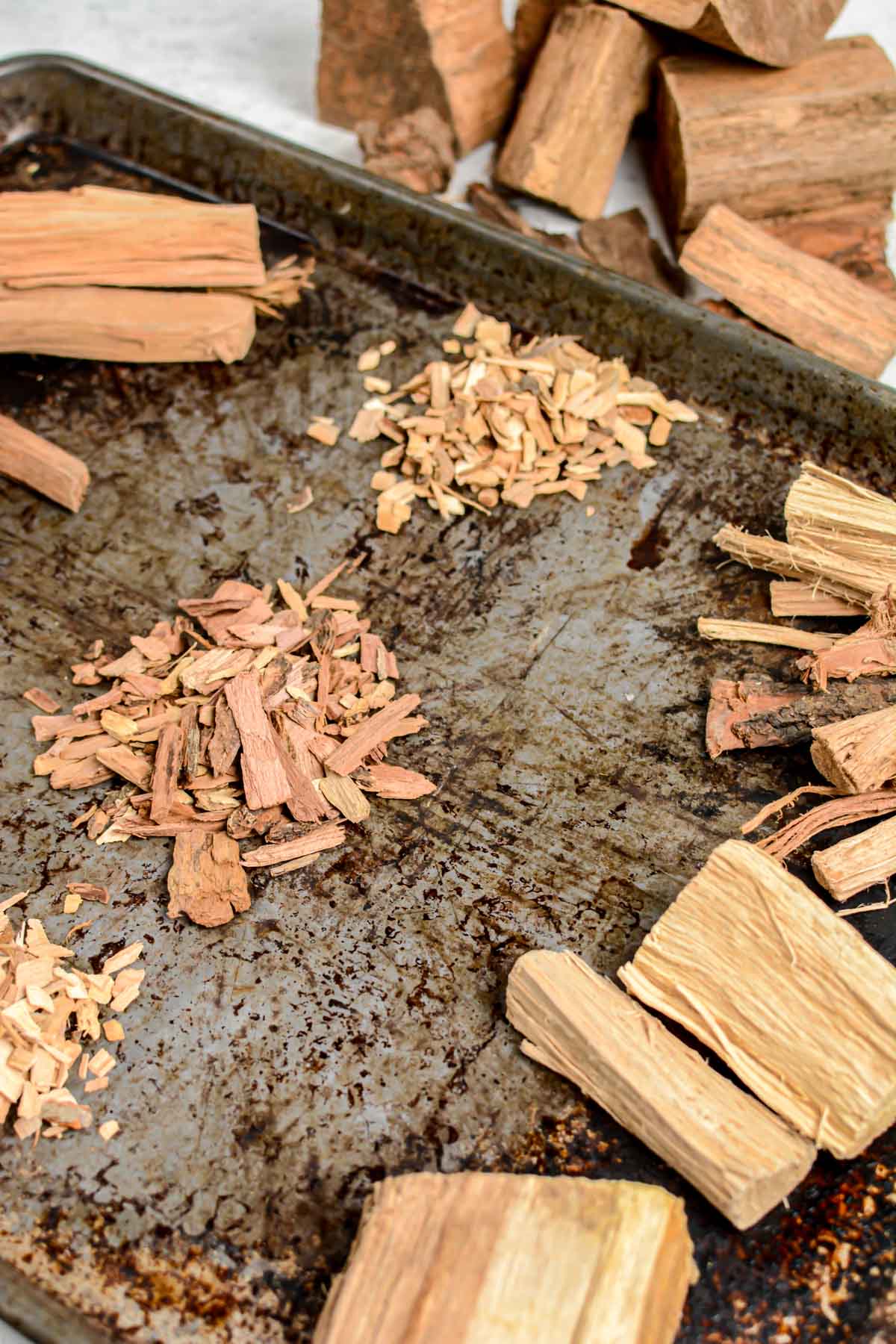
This can be overwhelming for a lot of folks, but I just see it as a chance to try out different taste profiles!
The following list includes my top recommendations when it comes to the best wood for smoking ribs.
| Wood | Flavor | Description |
|---|---|---|
| Oak | Medium | Earthy flavor. Burns steadily. |
| Hickory | Strong | Sweet and slightly nutty. Best used blended with a light fruit wood. |
| Peach | Mild | Fruity and sweet flavor. Burns steadily. |
| Apple | Mild | Sweet and fruity. Best for long smokes. |
| Mesquite | Strong | Intense smoky and earthy taste. Burns fast. Can be mixed with milder wood. |
| Pecan | Medium | Nutty, sweet and earthy flavor. Best when mixed with oak or maple. |
| Cherry | Mild | Sweet, subtle flavor. Adds color to smoked meat. |
| Maple | Medium | Lightly sweet and smoky. Burns steadily. |
Oak
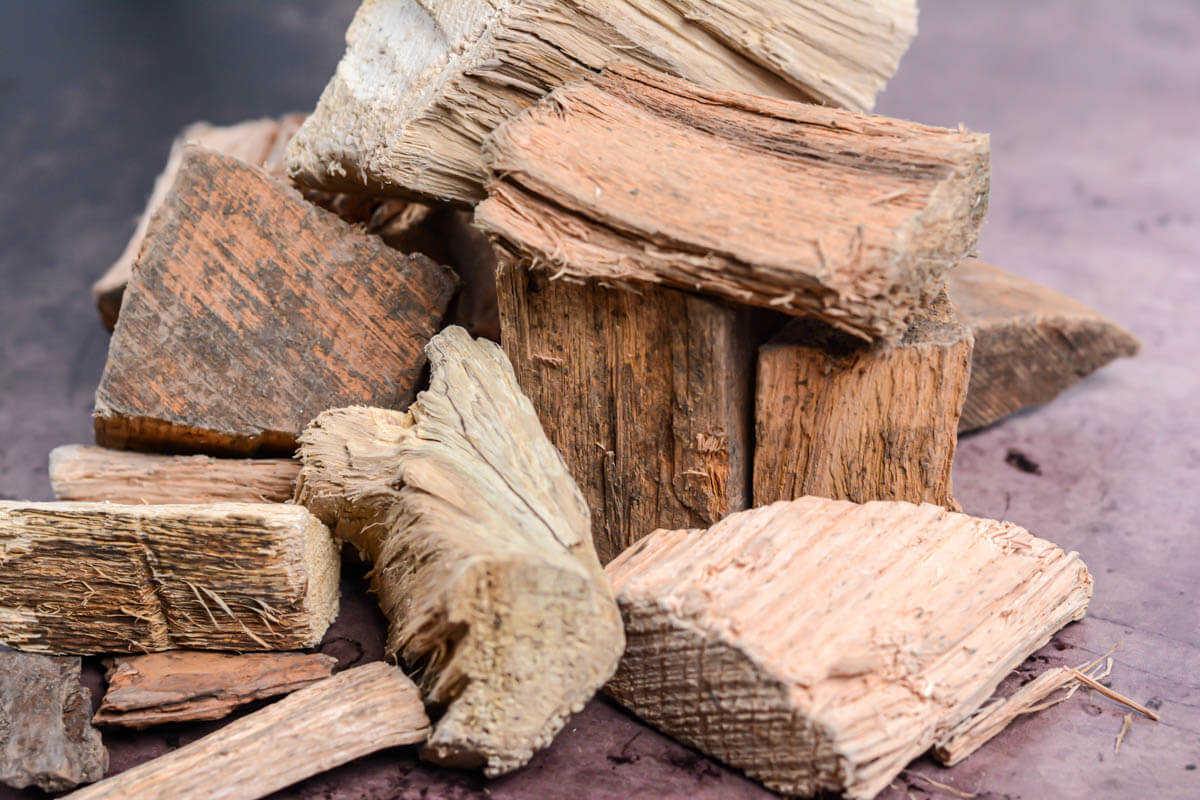
Oak is a hardwood known for its common use reputation in smoking all sorts of meat, and ribs are no exception. It’s one of the easiest smoke woods you can get your hands on, and also, one of the most traditional.
I think oak is ideal for smoking ribs thanks to its medium-strength intensity, inviting aroma, and dark-colored smoke. It’s surely a safe choice that’ll deliver an impressive complexity to your meat without being too bold.
The earthy flavor of oak goes so well with ribs and is a lot simpler to control compared to hickory or mesquite. This is why oak is also one of the beginner friendly types of smoking wood.
Another reason oak is a go-to smoke wood for cooking ribs is its longevity. It can burn steadily for a long time and reach sizzling temperatures, offering you the flexibility to smoke your meat slow and low or fast and high.
Snag the FREEBIE Wood Smoking Cheat Sheet
Hickory
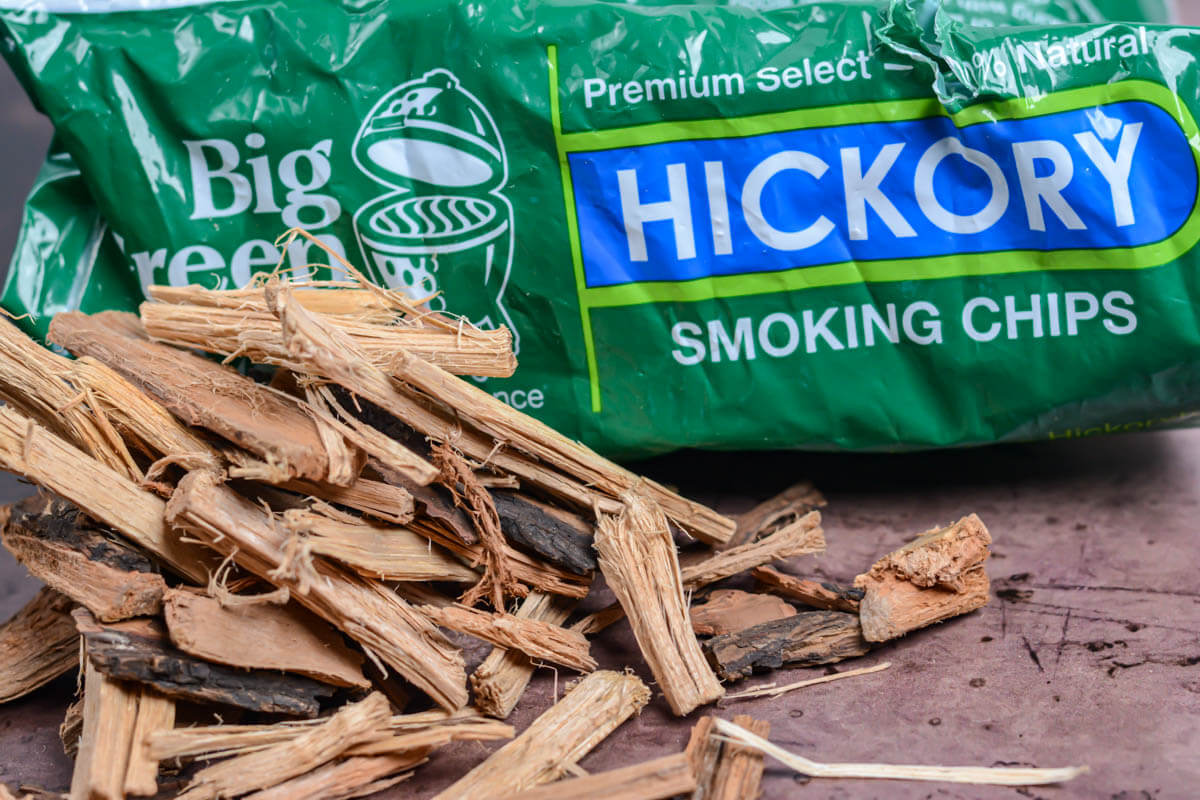
Another widely popular type of wood used in smoking meats is, of course, hickory. Sourced from the hickory tree and native to the East Coast, this hardwood is known for its bold flavor profile.
Hickory has a strong hearty feel that beautifully complements ribs. It gives the meat a smoky taste with hints of sweetness and a slightly nutty or bacon-like note.
As such, hickory is a fantastic wood for smoking pork ribs. Its pungent flavor can easily penetrate the meat and its rich aroma will leave you wanting more.
The complexity of hickory is boosted by its dark, deep smoke. It also offers a long burning time even when you turn up the heat, so it can work with any smoking style.
That said, you should keep in mind that using too much hickory can quickly make the meat bitter and overpower its natural flavors. This is why I recommend starting with fewer amounts of hickory or diluting it with a light fruit wood such as apple or cherry.
Peach
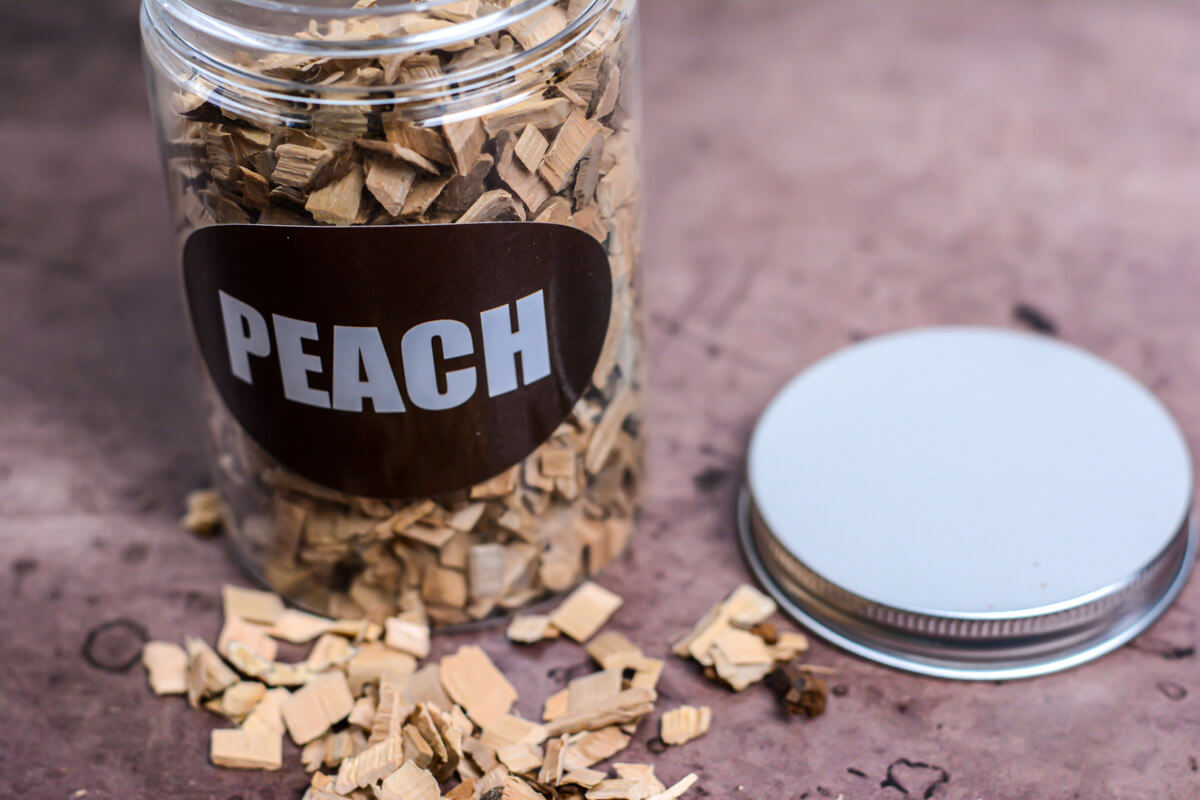
Many people think peach is a mild wood because it comes from a fruit tree. However, peachwood has a surprisingly strong zing that quickly became one of my personal favorites for smoking ribs.
Peach delivers a unique fruity and sweet flavor with a mild smokiness that screams Southern BBQ. It goes extremely well with sweet sides and sauces.
What’s more, peach is a beginner-friendly wood. It offers a steady burn for extended periods and is hard to overdo.
Apple
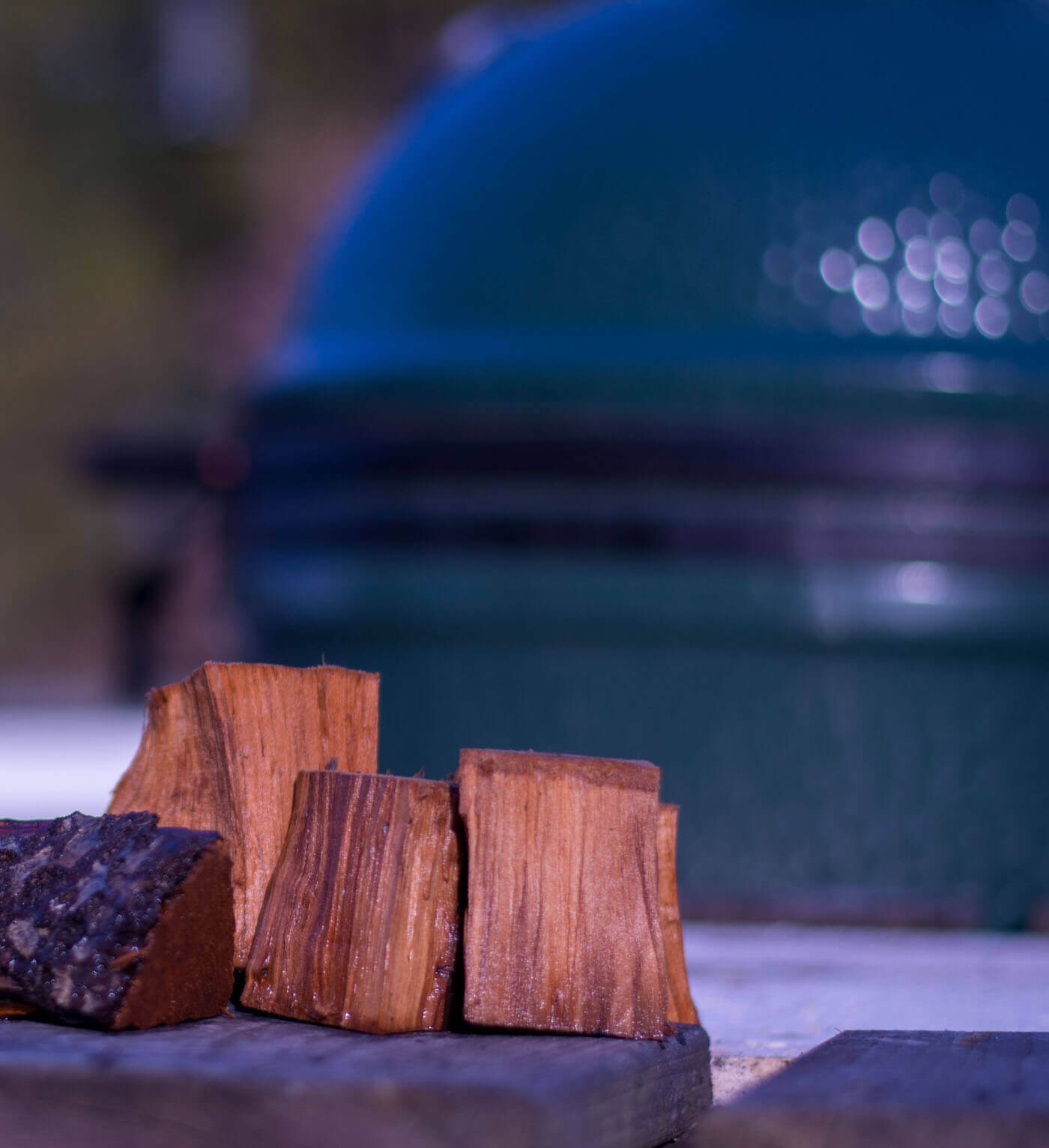
Another fruit wood you can use to smoke ribs is apple. If you prefer sweeter notes and mild smokiness but want something mellower than cherry or peach, then you’ll love applewood!
I love cooking ribs over applewood when I’ve glazed the meat with BBQ sauce. It also pairs incredibly well with apple butter BBQ sauce.
Still, some people find applewood on its own a bit too weak for their smoked ribs. In this case, I’d mix it with a stronger type of wood such as oak or mesquite for an extra kick.
Keep in mind that the subtle flavor of applewood can take longer than other woods to penetrate the meat. This means it’s best for cuts of meat that require a longer smoke.
Mesquite
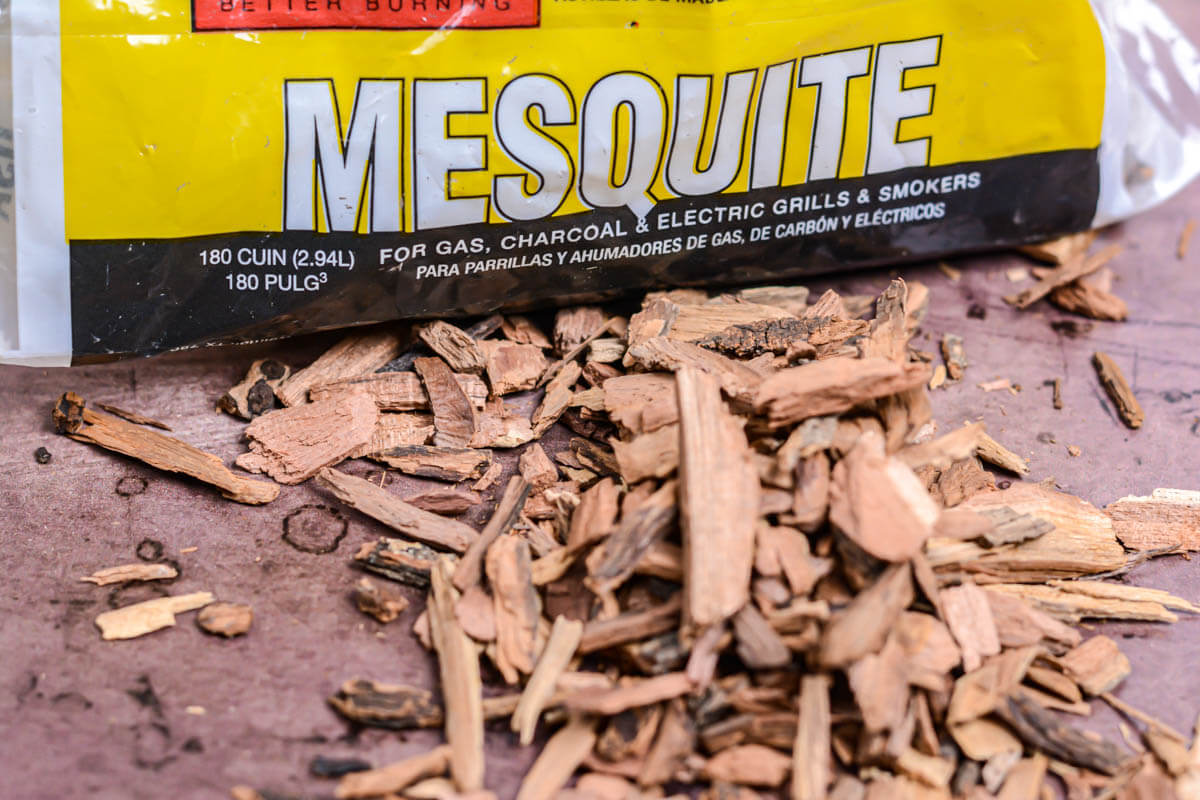
A Texas-style BBQ wouldn’t be so without mesquite-smoked ribs. If you’re after hardwood that packs a powerful punch, look no further than mesquite.
It can deliver an intense smoky and earthy taste to your ribs, boosted even more by the rich smoke it produces. Unless you’re into strong flavors, mesquite wood will be more of an acquired taste.
Unfortunately, mesquite wood isn’t very forgiving. It can easily taste overwhelmingly bitter and ruin your meat if you’re not careful. I like mixing mesquite with a mild wood such as apple or cherry to soften its blow.
Once you try mesquite mixed with a milder wood, I recommend you try it on its own too.
We used only mesquite for these smoked St. Louis style ribs and the intense flavor merged beautifully with the BBQ sauce used for glazing.
You should also keep in mind that mesquite burns relatively fast, so be sure there’s enough wood on hand to finish cooking. Also, look out for the sparks it emits while burning!
Pecan
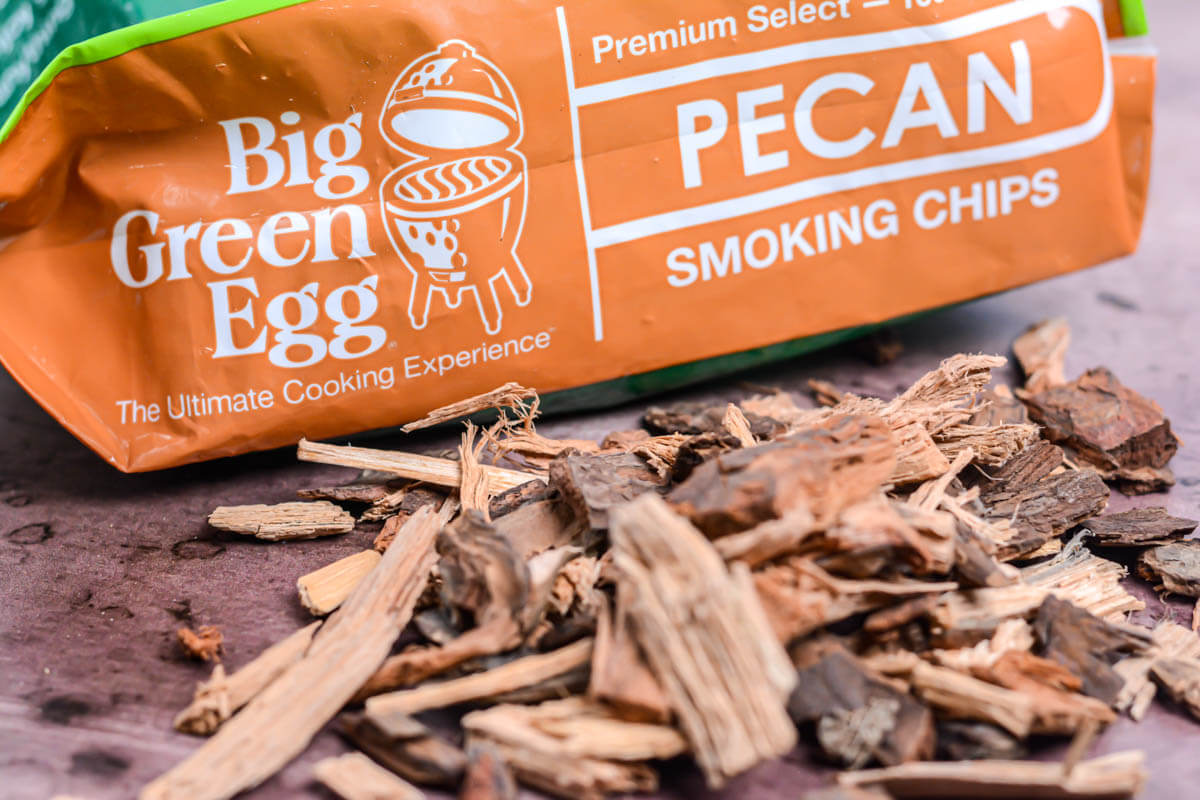
Pecan is simply an excellent choice for smoking ribs if you’re looking for a fruity flavor profile similar to apple but with extra smokiness.
This hardwood has a richer and sweeter taste than most fruit woods. It even offers nutty and earthy notes with a similar aroma to match. However, pecan doesn’t have an “in your face” smokiness as mesquite or hickory do.
Pairing pecan with ribs is a great way to keep the meat’s natural flavors under the spotlight. It’s a classic wood to whip up some Southern-style BBQ.
While it’s very unlikely that pecan will turn your ribs bitter, there’s a chance it’ll make the meat too sweet if you’re not careful. Mixing with maple or oak wood can bring down the sweetness of pecan.
Cherry
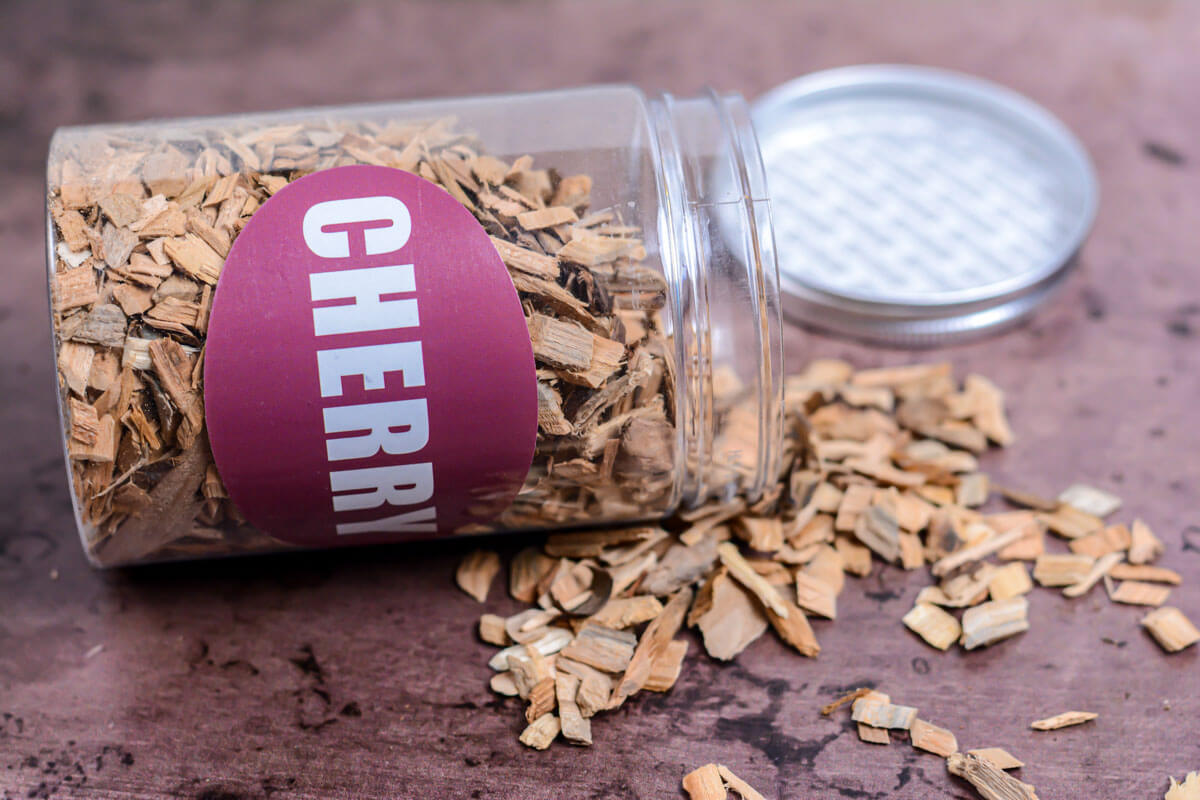
Cherry is a fruit wood that’s tough not to love. It can give your ribs light smokiness with sweet notes.
The subtle rich flavor of cherry goes deliciously with ribs, especially when using BBQ glaze. It also saves from worrying too much about overpowering the meat’s taste.
Besides the flavor, pitmasters love cherry thanks to its unique ability to add color to smoked meat. The signature dark red and mahogany is surely a pleasure to look at.
If you want an extra kick of flavor, try mixing cherry with maple, hickory, or oak. Each of these blends produces a different sort of complexity.
Maple
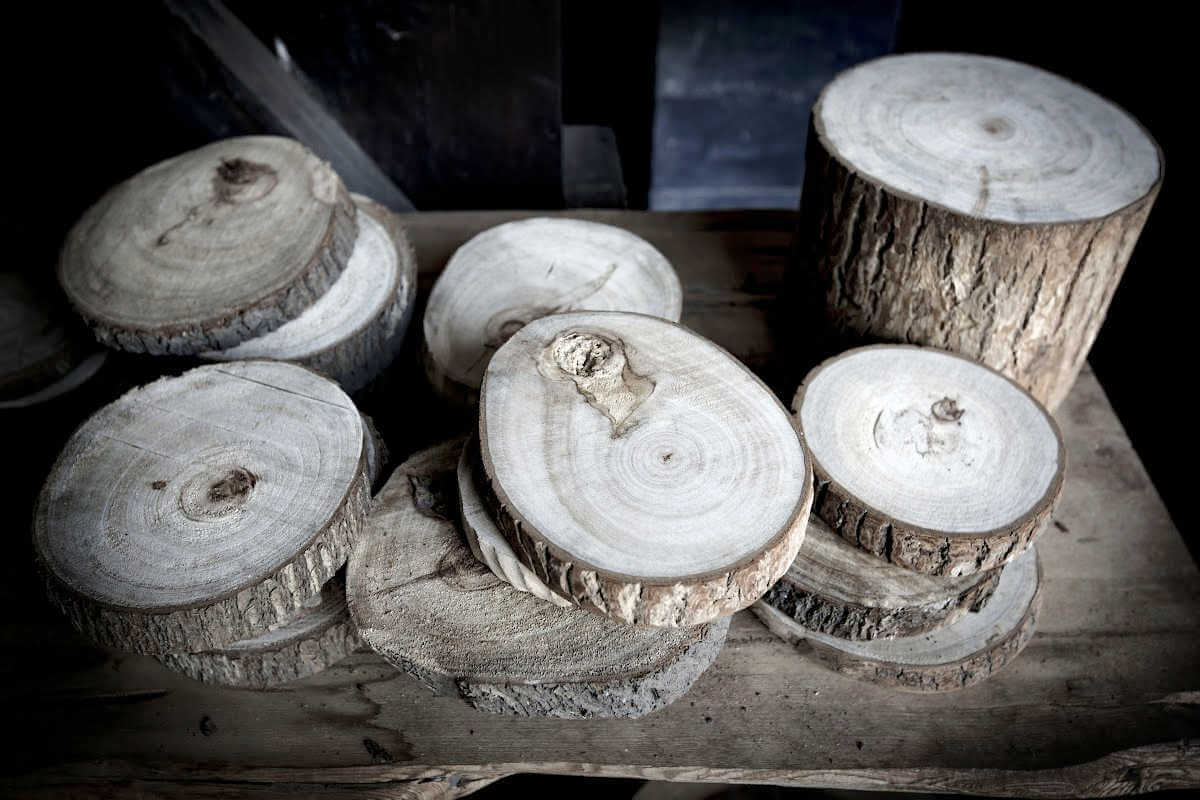
Maple syrup works beautifully with ribs thanks to its sweet smokiness, but what about maple wood? Well, let’s just say it’s a crowd favorite when it comes to cooking smoked ribs.
Whether they’re beef or pork ribs, maple wood will give your meat a subtle smoky flavor with hints of sweetness.
The resulting dish will offer a delicious taste that’s generally pleasant without being too overwhelming.
Speaking of which, maple is one of the least likely woods to have too much of. It’s very forgiving and can burn steadily for as long as you need, so it’s a wonderful choice for beginner smokers.
Maple produces dark, rich smoke that often tricks people into overestimating its strength. Its aroma is a replica of how it tastes; lightly smoky and somewhat sweet.
Which Wood Size Should I Choose for Smoking Ribs?
The answer here depends mainly on the type of smoker or grill you’re using.
Logs, for example, are best used in massive smokers or on a commercial scale. They’re the largest size available and take the longest to burn.
Chunks are most suitable for household full-size charcoal grills and smokers. On the other hand, chips or disks are the way to go if you’re cooking in a gas or electric grill/smoker.
If you’re working with a pellet smoker, pellets are the wood size you’ll need to use for maximum efficiency. But if you’re using a handheld or stovetop smoker, sawdust is the ideal choice.
F.A.Q.
Yes! Ribs evenly coated by a rub will better absorb smoke and get a richer flavor.
Most rubs also contain salt, which pulls moisture from the meat and ensures a nice crust.
Sugar and other sweeteners often added to rubs will help the surface of the ribs to caramelize, keeping all the moisture sealed inside the meat.
We prefer making our own dry rub and occasionally, applying a glaze toward the end of the smoking process.
For grilled ribs, spritz every 5-10 minutes. For smoked ribs, spritzing every 30 minutes is more than enough.
Spritzing ribs regularly will keep them moist and, as a bonus, it will also make the smoke flavor more powerful.
We used Coca-Cola to spritz these smoked baby back ribs. It added a bit of moisture and allowed the glaze to stick better to their surface.
Wrapping ribs in foil is optional but if you choose to do it, allow them to smoke unwrapped for at least 60-90 minutes.
We used the foil wrap method toward the end of the cooking process for our grilled St. Louis style ribs and it really helped the glaze penetrate the meat.
Wrap Up
The level of smokiness and the intensity of flavor of your ribs don’t just depend on the type of wood you burn, but also on the smoking temperature and duration.
Because the best wood for smoking ribs isn’t the same for everyone, experimenting with these elements is how you’ll end up with the perfect rack of smoked meat.
Related Articles with Wood Smoking

Ginny Collins is a passionate foodie and recipe creator of Savor and Savvy and Kitchenlaughter. Indoors she focuses on easy, quick recipes for busy families and kitchen basics. Outdoors, she focuses on backyard grilling and smoking to bring family and friends together. She is a lifelong learner who is always taking cooking classes on her travels overseas and stateside. Her work has been featured on MSN, Parade, Fox News, Yahoo, Cosmopolitan, Elle, and many local news outlets. She lives in Florida where you will find her outside on the water in her kayak, riding her bike on trails, and planning her next overseas adventure.
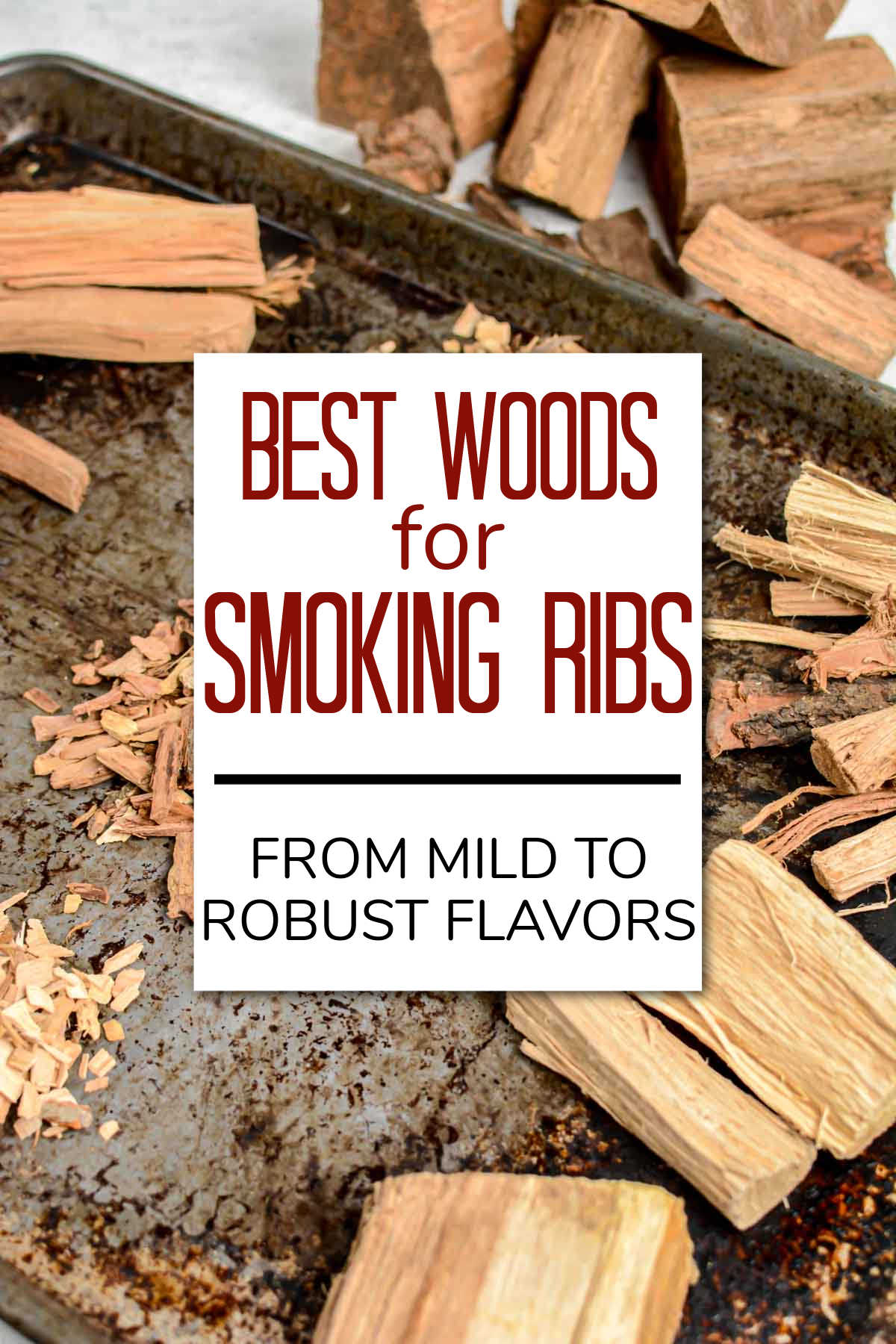
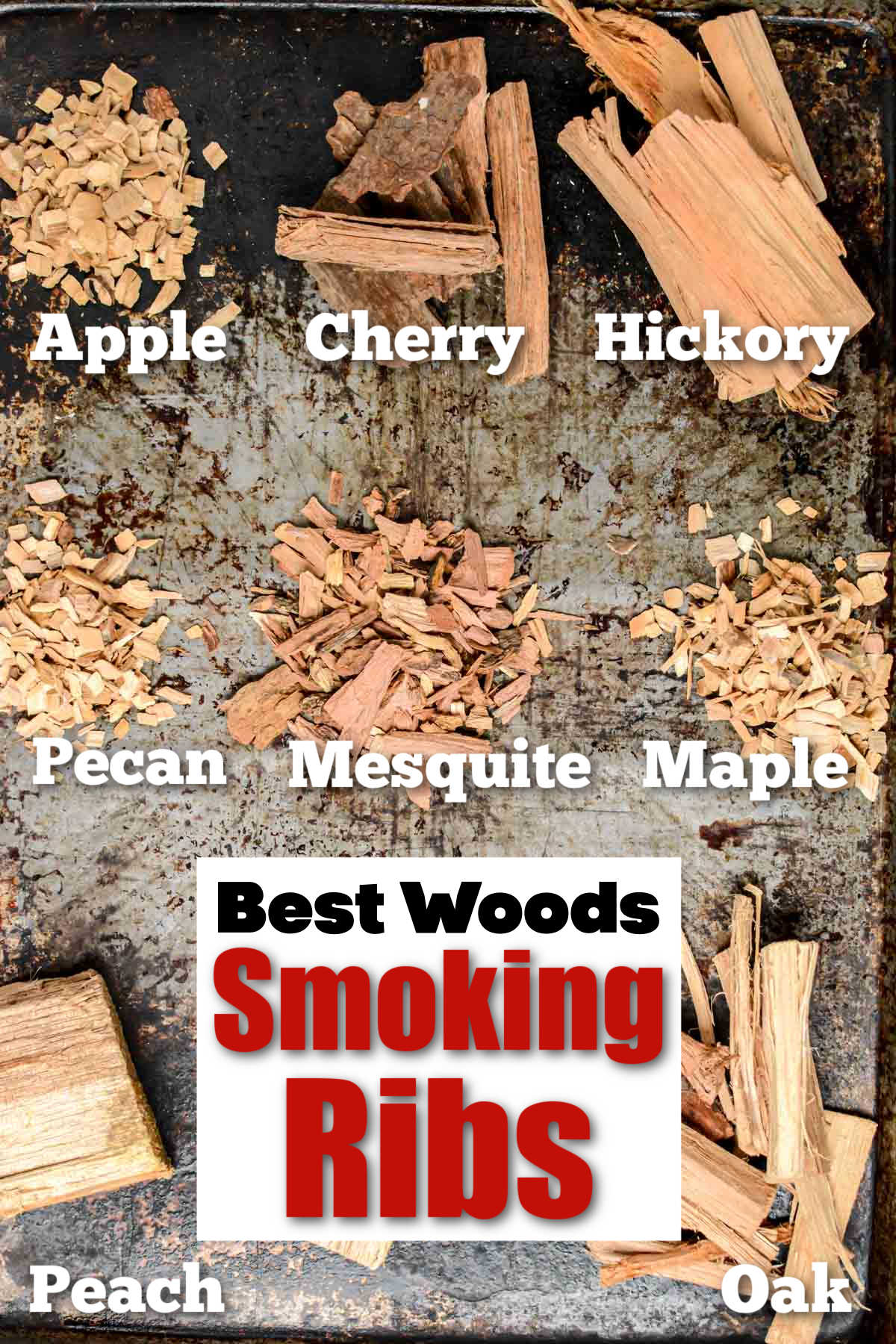


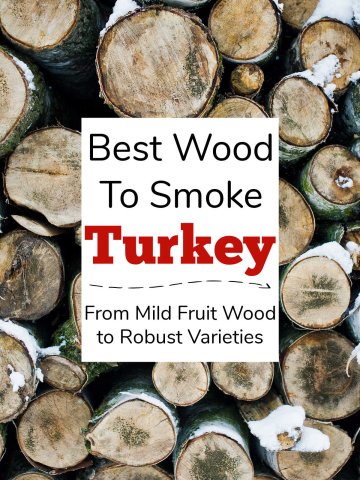
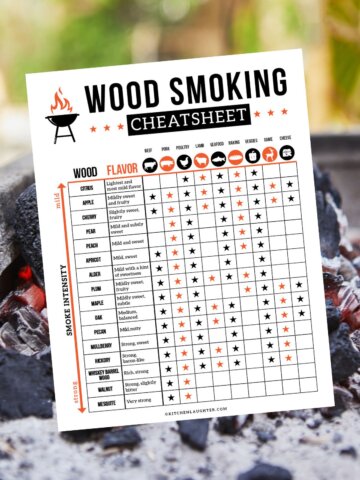

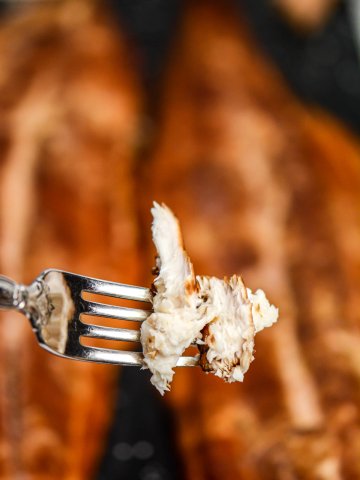
Leave a Reply